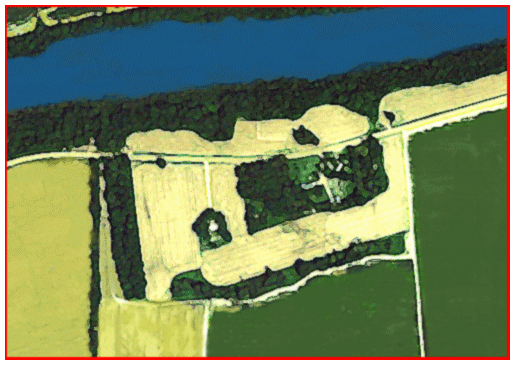- Holly Bluff Site
Infobox_nrhp | name =Holly Bluff Site
nrhp_type =nhl

caption =
nearest_city=Holly Bluff, Mississippi
locmapin = Mississippi
area =
architect=
architecture=
designated=July 19 ,1964 cite web|url=http://tps.cr.nps.gov/nhl/detail.cfm?ResourceId=285&ResourceType=Site
title=Holly Bluff Site |accessdate=2007-10-22|work=National Historic Landmark summary listing|publisher=National Park Service]
added =October 15 ,1966 cite web|url=http://www.nr.nps.gov/|title=National Register Information System|date=2007-01-23|work=National Register of Historic Places|publisher=National Park Service]
governing_body = Private
refnum=66000412Holly Bluff Site is an
archaeological site that is atype site for the Lake George phase of the prehistoricTemple Mound period of the area. The site is on the southern margin of the Mississippian cultural advance down theMississippi River and on the northern edge of that of the Cole's Creek andPlaquemine culture s of the South."It was declared a
National Historic Landmark in 1964.Location
One of the half dozen really big sites in the State of
Mississippi , the Holly Bluff Site is located on the south bank of George Lake, or Lake George as it is sometimes known, a half mile east of its confluence with theSunflower River and a mile and a half southeast of the village of Holly Bluff, Yazoo County.Prehistoric Timeline
The sites occupation begins with a
Jaketown Phase occupation evidenced by a scattering of Poverty Point objects in the lowest levels of excavations. This is followed, after a hiatus evidenced by a complete lack ofTuscola phase materials, by an early Marksville period component tentatively assigned an earlyAnderson Landing phase that may have lasted into an early Issaquena times. The succeeding late Issaquena andDeasonville phase s are virtually unrepresented at Holly Bluff. The site was again occupied from the lower half of the Baytown period up to the late prehistoric times. All phases of the local sequence from the Bayland on through Lake George are abundantly documented. Materials of theCrippen Point phase appear to be most widely spread, and it may have been at this time that the settlement attained it's greatest size. In the final Lake George phase additions were made to some of the mounds, especially Mound A, and the enclosing embankment was built, but the total area occupied was perhaps not as large as in the preceding period. A table showing the archaeological phases and periods that the Holly Bluff Site fits into can be found here. [cite book | last = Phillips | first = Philip | title =Archaeological Survey in the Lower Yazoo Basin, Mississippi, 1949-1955 | publisher =Peabody Museum | date = 1970 | pages = pp. 278]ite Description
It will be noted that Mound A is almost the exact center of the site, a most unusual location for the dominant mound in ceremonial centers of the Coles Creek and Mississippi periods. In the case of centers the
plaza is normally the central feature with the principal "temple" mound located on one side, usually but not always the west, its principal ramp giving access from the plaza on the east side of the mound. In the case of Holly Bluff there seems to have been two plazas to the east and west of the Mound A respectively.Sampling evidence supports the theory that Mound A was originally part of a group (including mounds B, C, D, E, and F) surrounding the western plaza possibly as early as theBayland phase , more likely Aden, and certainly established by the Kings Crossing times. Mound A may or may not have been the principal structure at this time. This plan may have carried on into the Crippen Point phase, but the evidence strongly suggests that either then or in the succeedingMayersville phase site reorientation took place. Mound A becoming the principle feature of an east plaza assemblage (with mounds F', G, G', H, U, and V) which remained the ritual center of the site thoughout the remainder of it's history. [cite book | last = Phillips | first = Philip | title =Archaeological Survey in the Lower Yazoo Basin, Mississippi, 1949-1955 | publisher =Peabody Museum | date = 1970 | pages = pp. 288-289]References
External links
Wikimedia Foundation. 2010.
